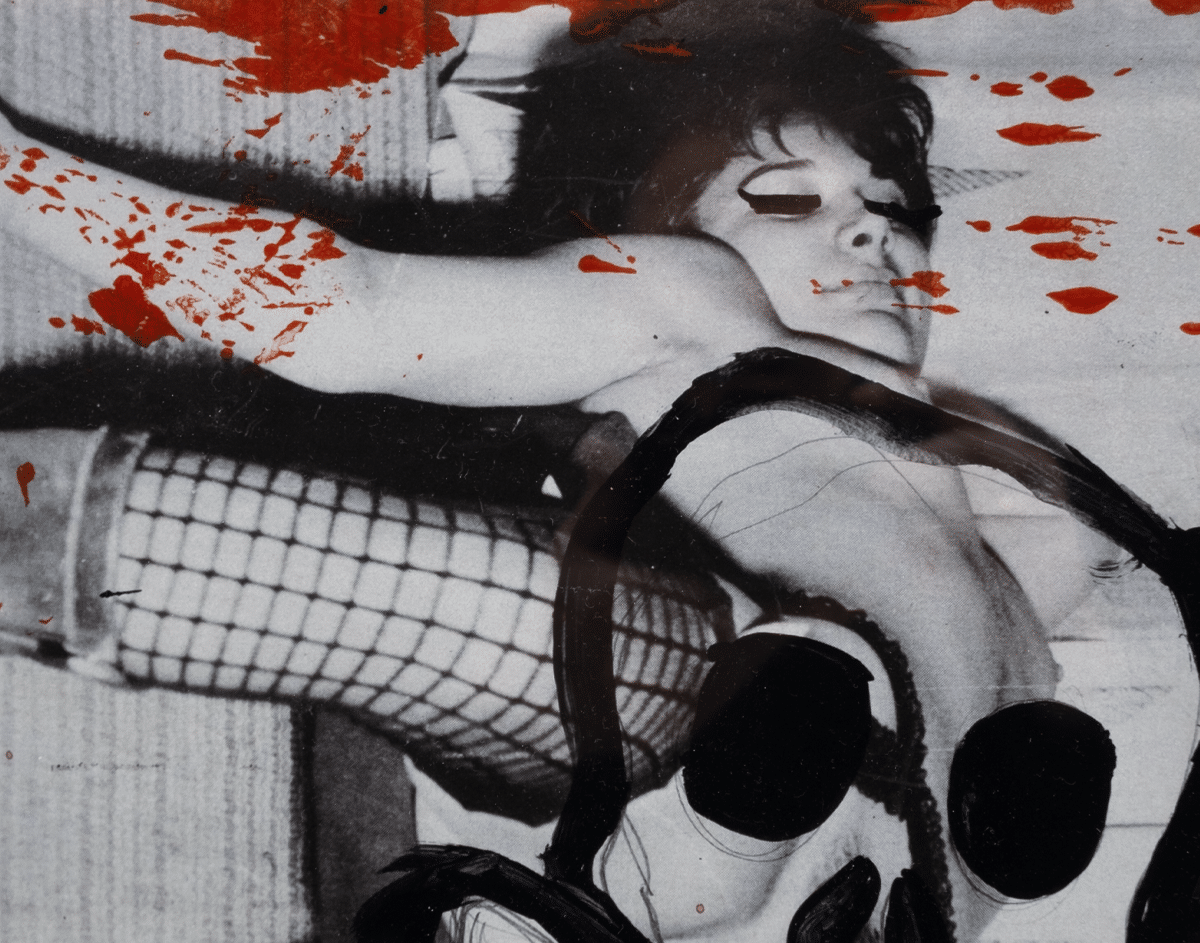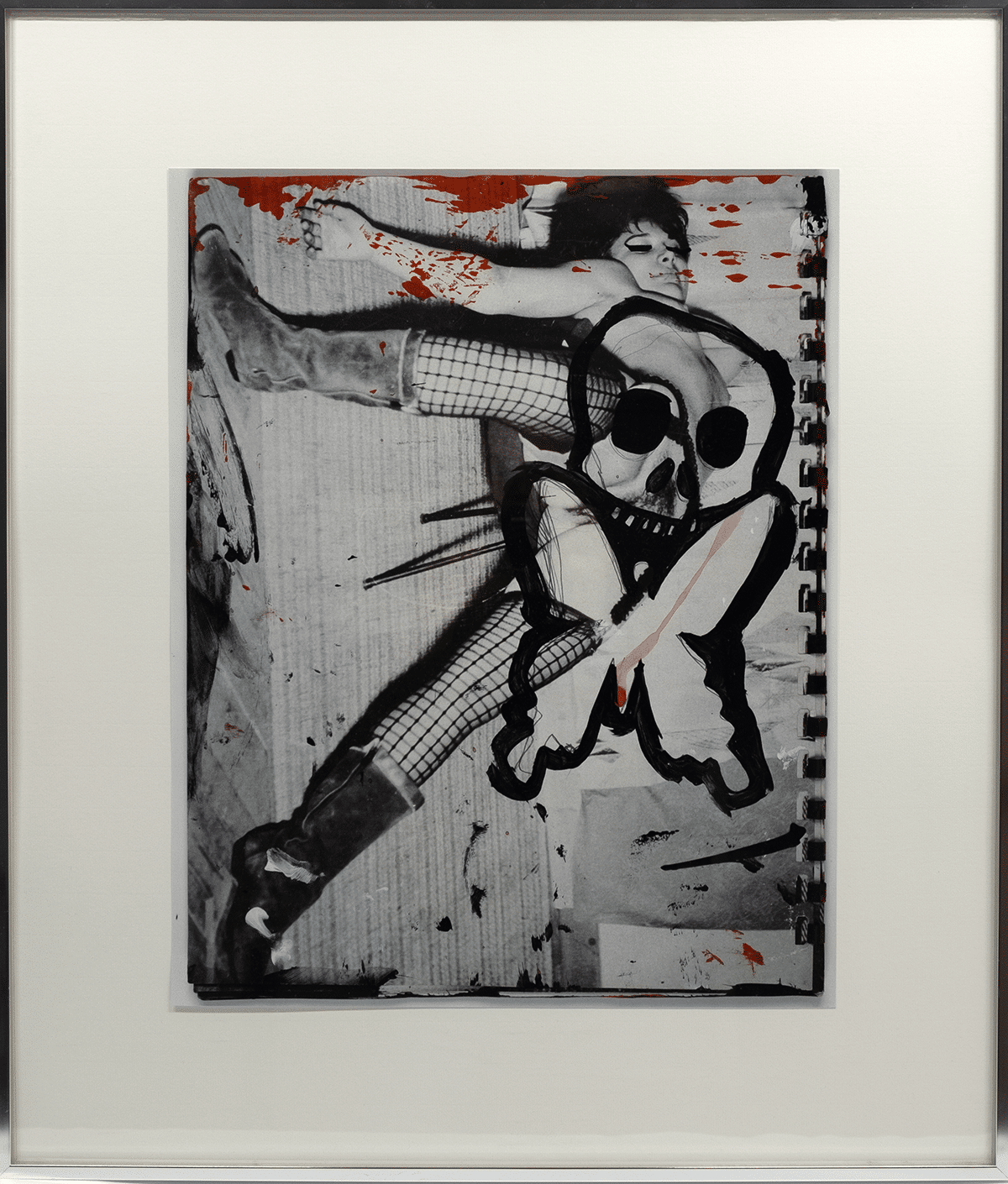Richard Prince (1949) - Madame Butterfly
Richard Prince's special issue for "Texte zur Kunst" entitled "Madame Butterfly" is based on a collage in which Prince paints an image taken from a porn magazine. The image shows a woman reclining on a stool with her legs spread. By rotating the photograph ninety degrees, the woman's posture looks like a bizarre contortion. Prince superimposes the outlines of a skull and a butterfly over her body. With two thick black strokes, he adds exaggeratedly large eyelashes. The painterly treatment keeps the image at bay, as it were, while the work draws just as substantially from the associative space opened by the pornographic motif and the subliminally aggressive overpainting that recurs in casual scribbles (translation from https://www.textezurkunst.de/en/artist-editions/richard-prince1/).
C-Print. Edition of 60+10 pieces, published by Texte zur Kunst. Signed and numbered on the back. Size approx 40*50 cm, frame approx 61*71 cm.
Back to offer overview
Richard Prince's special issue for "Texte zur Kunst" entitled "Madame Butterfly" is based on a collage in which Prince paints an image taken from a porn magazine. The image shows a woman reclining on a stool with her legs spread. By rotating the photograph ninety degrees, the woman's posture looks like a bizarre contortion. Prince superimposes the outlines of a skull and a butterfly over her body. With two thick black strokes, he adds exaggeratedly large eyelashes. The painterly treatment keeps the image at bay, as it were, while the work draws just as substantially from the associative space opened by the pornographic motif and the subliminally aggressive overpainting that recurs in casual scribbles (translation from https://www.textezurkunst.de/en/artist-editions/richard-prince1/).
C-Print. Edition of 60+10 pieces, published by Texte zur Kunst. Signed and numbered on the back. Size approx 40*50 cm, frame approx 61*71 cm.
Back to offer overview





